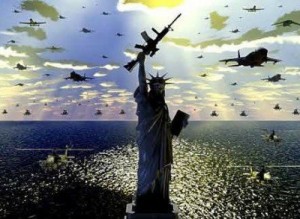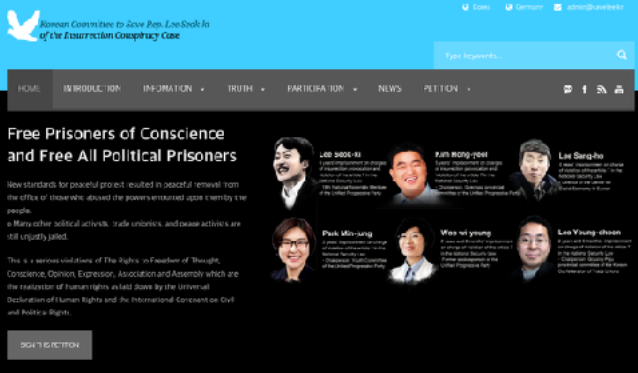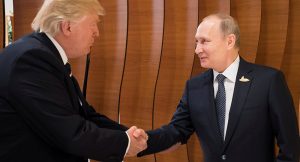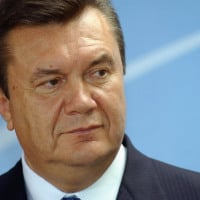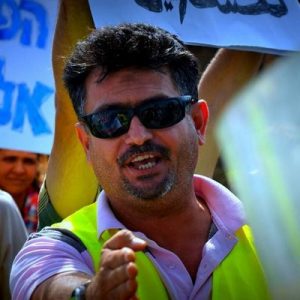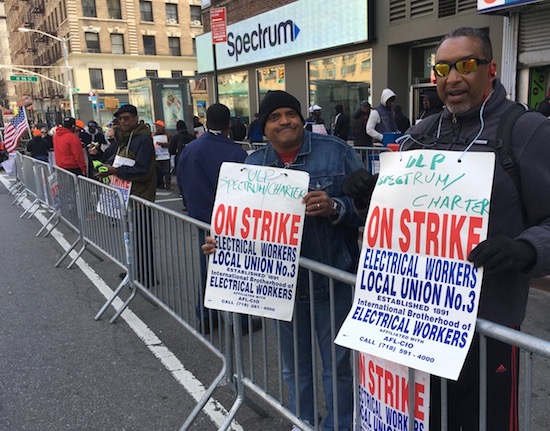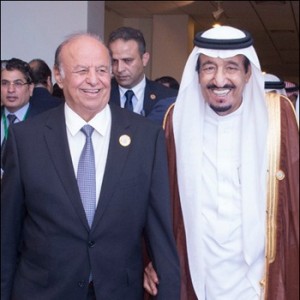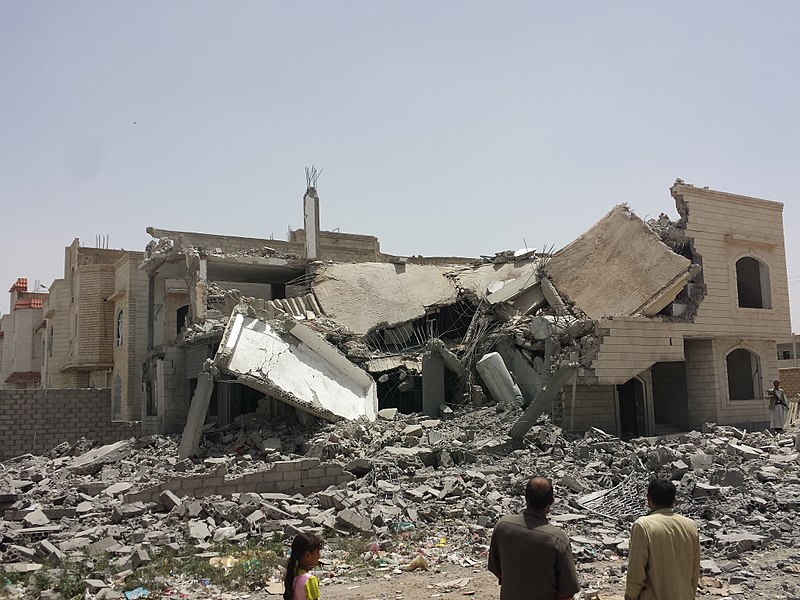When I was a young boy completing catechism in preparation for my first communion, I had to learn the proper procedure for auricular confession, a primary ritual of Roman Catholicism.
At that age I did not really understand what I was supposed to do or really why. In fact, catechism, save for the fact that it offered about two hours leave from regular school instruction on Thursdays, would have been a torture except that I liked my teacher. I was just never good at memorising things and learning long texts like the Apostles’ (Nicene) Creed posed an insurmountable challenge. However, a first confession must be performed if I was to get my first communion—a sort of graduation ceremony in which we got to wear something like priestly or academic vestments (and I always liked getting dressed up).
In preparation for the confession we had to learn things like what “sin” is and why our sins have to be forgiven before we can take the host (a wafer that tastes like plastic, perhaps calculated to avoid cultivating carnivorous appreciation of the deity). The concept of sin is at best abstract for an eight-year-old. Although there was a kind of primitive devotion in our family—my grandmother was very faithful to the church calendar—I cannot recall sin or morality playing much of a role in our home. Things were handled very pragmatically. A few rules and some decorum were stated and if you violated these there was summary judgment: confinement to quarters or a few lashes with father’s belt. Back then men at home still wore proper trousers instead of athletic attire from some high-end sweatshop magnate. So the morality at home was very secular and utterly lacking in celestial allusions.
This made confession into a ritual of inventing things to tell the priest which somehow conformed to the language of the catechetic catalogue of proscribed acts or thoughts. In essence this was an exam to be passed to get the white robes for the first grand ceremonial wafer feast at high mass (still Tridentine rite). After passing the exam in the first part I struggled to remember the lines of the Ave Maria and Pater Noster we had to repeat to ourselves for penance. I found myself grateful that I was never told to recite the Credo or I would never have left the pew.
Following the first grand communion, when one feels almost like an acolyte, if not a priest, the whole ceremony gets boring. The flavours never change. One had to avoid breakfast before Sunday mass and wearing an ordinary suit and tie just did not make one feel “part of it all”.
Later it was explained to me that we really didn’t have any sins to confess when we were eight. I had not killed any classmates with my father’s shotgun while medicated for not paying attention in class. I grew up with sisters, so girls were just normal company and the term “Carnal Knowledge” (a risqué film of that era) meant nothing at all to me. I also learned, but maybe that was dubious or disputed theology, that the Eucharist was itself a sacrament of higher rank than the act of contrition so I only had to be truly contrite to take the host without any conversation with an unnamed source of grace in a little wooden cubicle.1
But there was a valuable social lesson in all this early psychological training. Namely, confession is a tool for manipulation of the parishioner. It is a complex tool. On the one hand the parishioner learns in childhood that a proper confession is one which tells the priest what he wants to hear. Already as a child one is told what to confess and how to say it. On the presumption that one must have sinned—whatever that means—the verification that a sin was, in fact, committed came when the priest said, yep, yep, followed by some inscrutable Latin words, concluding with “go my son, and sin no more”. Then one heard the screen slide closed in the little box and off it was to the pew to repeat some lines five or ten times, after which one could finally go back home and play.
I would say I was as honest and sincere as any child my age in such an environment. Nonetheless I learned another lesson. What one did in the confessional to get the absolution was just as effective outside. Lying outright is simply too much work. You just have to know your confessor and what he (or she) wants to hear. This was my first lesson in the power of euphemism and circumlocution. So when I knew that I was coming home too late and that my mother would be quite cross with me (my father had died too young to enjoy this phase), I began to consider along the way home what my mother would find to be ameliorating circumstances or a valid excuse. In order that I would not lie outright I reviewed all the events of the day, all the people I had met, what could be checked and what was impeachable. When I arrived home I knew the first question would be “where have you been?” This was just another way to say, “you are late and you are in trouble!” So I would choose the least incriminating or least objectionable answer that would either excuse my tardiness or result in a misdemeanour rather than a “felony”.
Years later as a teacher I would tell my pupils this too. First, I wanted to discourage outright and stupid lies, and, second, I wanted my pupils to grasp that not every factually correct statement is a true answer to the question being asked. In fact, the sensible critique—back when there was a critique—of formal education argued the same point for all exams. Blacks did disproportionately badly on exams in white run schools because they did not know what the real questions were—not because they were incapable of giving correct answers. Hence the much-praised (mainly by white folks) return to standardised testing was really a return to the same psychological manipulation I was taught as a young catechist. It was a ruse to separate the rulers from the ruled. Passing the tests—whether an IQ test or an SAT—was a ritual to keep those not deemed adequate from those who were best susceptible to indoctrination. Like the SCUM say when they explain that Parris Island is intended to assure that they get just “a few good men”—to kill on command.

Robert Gibb, The Thin Red Line (1881) displayed in Scottish National War Museum (Source: Dissident Voice)
Now before getting into the meat of this argument, let me make a historical note. The term “thin red line”, a bit of British military sentiment, is supposed to have originated during the Crimean War. On 25 October 1854, the 93rd Highland (Sutherland) Regiment faced a Russian cavalry charge in the Battle of Balaclava. There some five hundred foot soldiers stood in two lines to face the charge.
It is important to understand infantry tactics and weaponry of the day to grasp the significance of this. (If any one wants to see this today then I recommend watching the Trooping of the Colour at Horse Guards Parade held every year on the official birthday of the British monarch—it can be found in the Internet.) Since the machine gun had not yet been invented four lines of massed infantry produced “rapid fire”. The first line fires, drops to its knees and reloads while the second line fires and so forth.
By this method (graphically demonstrated in the film Zulu), single shot rifles can be brought to a very deadly rate of fire—very effective against men with spears and swords. A further elaboration of this tactic is the square. The line can be turned outward or inward—should the enemy breach the line—and fire directed at any side without interruption and with relatively little risk of troops shooting each other (assuming the inward square is not too tight). The Sutherlands did not have enough soldiers for a classic four-line infantry barrage so they stood their ground with two lines. They managed—at least this is the report—to deter the Russians and protect the unprepared troops in the rear. The battle is deemed heroic because of the meagre contingent facing a full cavalry assault. However, it has been written that the Russians withdrew because they believed that such a small force had been deployed as a diversion. Not wishing to waste their strength against the Sutherlands they went in search of the main force. Hence the heroism of the individual soldiers actually meant an unintended feint—using a small force to create the impression of more might than was actually available and fooling the enemy. Of course, even unintentional deceit is often just as useful as that which is planned. Moreover deceit does not necessarily rely on a falsehood but upon knowing, or being grateful as if one knew, how to create an impression in the mind of the target to which he or she is already susceptible.
And that brings me to today’s homily. An article has been posted throughout the alternative media that has led to a serious dispute. Ironically the piece is called “Trump’s Red Line.” The apparent reference is to what under a previous POTUS was called “the red line”. The implicit meaning of this term “red line” is that of the “line in the sand”—the kind of schoolboy-bully dare usually leading to a serious fight. I think this is the wrong way to understand the term in the current situation. Not that bullies—with a schoolboy mentality—are not involved but also, that the historical use I describe above is not only more appropriate to describe the principals but that the ruse is analogous.
First publication of the article is attributed to Die Welt am Sonntag, a newspaper in the German Axel Springer publishing group, which posted it on 25 June 2017 in English. On the same day Die Welt posted another item from the author in German titled “So einen Scheiß kann ich mir nicht mal ausdenken” (roughly “I could not even dream this shit up.”). It is described as the protocol of a “chat” between a former US “Sicherheitsberater” (presumably one of those “national security advisers” described in Trump’s Red Line or the senior adviser from whom the reader will read a lot below) and a US American soldier (of unspecified rank or grade). The subject is events in Khan Shaikhoun, Syria. Die Welt editors advise the readers that the places where the parties to the exchange are assigned are known to them but that personal statements that could provide information about military operations have been abridged so as not to endanger sources.
As a result of the dispute arising from the publication of the article “Trump’s Red Line”, another article was posted defending the author of the first.2 The defence lodged, however, is not a counter to the criticism but underscores the problem—extending the “thin red line” so to speak. In what follows I will describe the “Battle of Khan Sheikhoun” as it is recounted by the regimental scribes whose task it is to present the battle in the most favourable light—for the regiment that is and those who deployed it.
In Trump’s Red Line, posted here on 4 July 2017, the author begins by stating that:
On April 6, United Stated President Donald Trump authorized an early morning Tomahawk missile strike on Shayrat Air Base in central Syria in retaliation for what he said was a deadly nerve agent attack carried out by the Syrian government two days earlier in the rebel-held town of Khan Sheikhoun. Trump issued the order despite having been warned by the US intelligence community that it has found no evidence that the Syrians had used a chemical weapon. The available intelligence made clear that the Syrians had targeted a jihadist meeting site on April 4 using a Russian-supplied guided bomb equipped with conventional explosives. Details of the attack, including information on its so-called high-value targets, had been provided by the Russians days in advance to American and allied military officials in Doha, whose mission is to coordinate all US, allied, Syrian and Russian Air force operations in the region. Some American military and intelligence officials were especially distressed by the president’s determination to ignore the evidence. “None of this makes any sense,” one officer told colleagues upon learning of the decision to bomb. “We KNOW that there was no chemical attack… the Russians are furious. Claiming we have the real intel and know the truth… I guess it didn’t matter whether we elected Clinton or Trump.”
Within hours of the April 4 bombing, the world’s media was saturated with photographs and videos from Khan Sheikhoun. Pictures of dead and dying victims, allegedly suffering from the symptoms of nerve gas poisoning, were uploaded to social media by local activists, including the White Helmets, a first responder group known for its close association with the Syrian opposition.
I take the liberty of citing this article’s first paragraphs in full because it is necessary to examine the way this story is told from the very beginning. For what follows I will refrain from lengthy citation where possible and refer the reader to the piece itself.
As to the scene-setting first paragraphs some questions arise which are by no means trivial.
- While it is a matter of record that the attack occurred one must ask: How does the author know or how should we know that the order issued by Trump was actually based on the stated grounds—alleged use of a chemical weapon? The US is at war with Syria and has been for a long time. Bombing countries is the weapon of choice for the US. Ask any Korean, Vietnamese, Laotian, Cambodian, Iraqi, Afghani, et al. When the US is at war it bombs. It has given all sorts of excuses—Tonkin Gulf comes to mind. It even bombs its own citizens when they are deemed belligerents as anyone in Philadelphia or Waco can attest. So what difference does it make whether the alibi was a chemical weapon or a fantasy attack against a US destroyer violating territorial waters of a sovereign country?
- Who is the US intelligence community? The police red squad in Washington, the FBI, Naval Intelligence, a Homeland Security fusion centre, the CIA, et al., their wives, retired officers?
- What is “available intelligence”? From whom? Of what nature and for what purpose?
- Who are jihadists?
- What is a “high-value target” in a sovereign country where the US has no authority under any colour of law to aim?
- Which American military and intelligence officials? Those assigned to Fiji or in Venezuela?
- Why is the outcome of the last presidential election of relevance to this story?
- If the world’s media was saturated with photographs and videos, who verified that they are of or from Khan Sheikhoun?
- If the depicted injured and dead—unverified—are allegedly suffering from the symptoms of nerve gas poisoning, who alleges this and what credibility do these allegations have without substantiated image documents?
- Who are “local activists”, the rebels? “Including the White Helmets…” The White Helmets is not known “for its close association with the Syrian opposition. It is known that they were organised by a British defence contractor for the so-called Syrian opposition. The principal funders of the organisation are the same as those who finance the mercenaries themselves. They are, in fact, a part of that so-called opposition. That opposition is also known to comprise bands of mercenaries funded by the US, Saudi Arabia, Israel and the rest of the countries allied with US-Israeli efforts to topple the Assad government or Balkanise it (here the comparison is appropriate since the CEO of the company that created the White Helmets cut his teeth—and who knows what else—in Bosnia).3
In the following paragraph we find the sentence:
“The provenance (jargon) of the photos was not clear and no international observers have yet inspected the site, but the immediate popular assumption worldwide was that this was a deliberate use of the nerve gas agent sarin, authorised by President Bashar Assad of Syria.”
- Perhaps I am not on the same planet but I did not wake up one day in April and assume that Mr Assad used nerve gas. So where does this popular assumption originate?
- The sudden use of Mr Assad’s full name is purely rhetorical. It is clearly intended to reinforce the impression that such an act would be a highly personal order issued from the US archenemy. It is certainly not intended to educate the reader as to the correct name of a head of state against which the US happens to be at war. Or is this equal time because the article begins with “United States President Donald Trump” thereinafter just “Trump”?
- Why would Trump refer to “Syria’s past use of chemical weapons”—apparently referring to a time prior to his presidency? A reasonable person would be excused for concluding that Trump merely followed an assumption that his predecessor propagated based on precisely the same “available intelligence”.
Then come the handkerchiefs again:
“To the dismay of many senior members of his national security team, Trump could not be swayed over the next 48 hours of intense briefing and decision-making. In a series of interviews, I learned of the total disconnect (jargon) between the president and many of his military advisers and intelligence officials, as well as officers on the ground in the region who had an entirely different understanding of the nature of Syria’s attack on Khan Scheikhoun. I was provided with evidence of that disconnect (again jargon) in the form of transcripts of real-time communications, immediately following the Syrian attack on April 4.”
- Who were the senior members in dismay?
- What was the nature of the briefing and decision-making? Did it have anything to do with the public statements rationalising the attack? How do we know that the alleged intelligence had anything to do with the briefings or decisions to be made?
- With whom were the interviews conducted?
- What is “disconnect”? Is Trump on a dialysis or heart-lung machine?
- What is “an understanding of the nature of Syria’s attacks”? Is it an opinion? Is it a report of observations of the scene? Or is it perhaps just a word because maybe the people concerned have no understanding of the case?
- Who provided “real-time communications”? Why should these be considered reliable testimony of the facts—if there are any?
The article follows with a quaint press release explanation of what the US regime has said it is doing to avoid outright war with Russia. I think it is fair to say that it can be treated with all the credulity applied to any government press release. Or are we to believe that the US war establishment is more honest now than it ever was in the past?
Then Michael the Archangel enters the scene in the form of “a senior adviser to the American intelligence community, who has served in senior positions in the Defence Department and Central Intelligence Agency. Does the author mean someone of the rank of Richard Helms or William Colby—with the same established credibility?4
Michael the Archangel then proceeds to tell the author minutiae about the supposed target of Syria’s bombing raid. We get some more jargon; e.g., POL. This shows that the author is versed in the terms of the trade, as if he were one of them, and can translate daily war operations like an Edward Murrow—naturally without even the pretence of being at the front (a point to which I will return).5
Then comes the real fun:
“One reason for the Russian message to Washington about the intended target was to ensure that any CIA asset or informant who had managed to work his way into the jihadist leadership (again who are they?) was forewarned not to attend the meeting.” This is third rate Ian Fleming. It has been established and even acknowledged that the CIA funds, directly and indirectly, these mercenaries and has done so since the dean of Carter’s covert wars, Zbigniew Bzrezinski, helped create them in Afghanistan. Bzrezinski never ceased to brag about this—because he felt it promoted his war against Russia (then called the Soviet Union).6
It is more likely that the Russian message to Washington—assuming there was one and that it had anything like the character the author’s St. Michael alleges—was intended to enforce the ostensible agreement to combat these mercenaries by forcing coherence between public statements and actual conduct. To date Russia has been rather unsuccessful in achieving that goal. We only have the senior adviser’s word for it that the Russians have anything to say to the US regime, which it feels obliged to respect. The recent destruction of a Syrian Air Force combat aircraft by US Forces ought to be sufficient proof of that—without input from St. Michael—who then gets quite folksy by telling the author about the Russians: “They were playing the game right.” The language is offensive on its face. Since 1945, the Russians and most of the rest of the world has “played the game right.” It is the US regime that does not. Of course, that is the fact that cannot be stated openly. Only the Russians can be suspected of perhaps “not playing the game right.” That is what is meant too, so the author lets this remark stand as if it were a sign of “fair play” on the part of the US regime—for whom the senior adviser still works.
Then the author throws in some other meaningless words: “a time of acute pressure on the insurgents” and people “presumably desperately seeking a path forward in the new political climate”. This is just State Department boilerplate. What is “acute pressure” from what or whom? What is “a path forward” in what direction, where and with what aim?
Then we get some names finally—but not of people in the “intelligence community”. Trump and “two of his key national security aides… Rex Tillerson and Nikki Haley”. First of all, since when is the Secretary of State “an aide”? The Secretary of State is a member of the cabinet and heads the entire US diplomatic corps and Foreign Service, and even in the line of presidential succession, hardly an “aide”. Even if UN Ambassadors, with the notable exception of former Deputy Director of Central Intelligence, Vernon Walters, are not usually identified as members of the “intelligence community” (if that term has any meaning under statute), Nikki Haley also has cabinet rank.7 She is not listed in the Foreign Service List with the rank of an “aide” to the president. The author’s only reason for this blatant inaccuracy is to suggest that Trump and his senior cabinet members are not fully competent or qualified to participate in the serious business the author wishes to explain to the readers.
Then we get another jargon-laced description of martial skill and military superiority. The story that follows purports to be an analysis of the situation at the scene (in Syria, where our author is conspicuously absent). To spare the reader the details, which can be read in the article itself, I just list the questions I had. Others could be asked:
- If the gas in question is or can be made undetectable how are the “locals” to identify the weapon with anything even approximating certainty?
- Who provided the Bomb Damage Assessment and why should it be believed? Body counts in Southeast Asia come to mind.
- If there is no confirmed account of deaths what deaths are at issue here? Whose “intelligence estimates” does the author use and what good are they?
- Who are the “opposition activists” reporting? Why is CNN an authority?
- What significance can the observations or reports by MSF (Médicins Sans Frontières) have from a clinic 60 miles north of the target? Recently we have heard how fire brigades and other emergency personnel in London were unable to provide reliable information in the immediate vicinity of the Grenfell Tower. Sixty miles in Syria where inland transport and communication are interrupted by war can scarcely be called on site.
- If all of the indicators cited to imply the use of some kind of chemical weapons are taken as a whole, then it is entirely possible to infer that the mercenary forces in the course of their operations caused such injuries. So why is it even necessary to consider the Syrian government forces as potential perpetrators?
Of course, one purpose of detailed description of a weapon that may not even have been used is to implant in the readers’ minds the expectation that it could be used—to support in other words what the author initially calls “the immediate popular assumption”.
Then the perpetuum mobile upon which this entire story relies—the Internet—“swings into action” all by itself, of course, like divine providence. This is another ruse because the target readers have been trained for years now to see the Internet as a truth machine instead of the largest weapons system in the US arsenal—after atomic bombs, which it was designed to complement. That US intelligence is at it again—“tasked with establishing what had happened.” Isn’t this curious? We still do not know who this is. Despite the fact that the past decade has been full of apparent exposures of how large, differentiated and competitive the bureaucracies are that are formally constituted (we don’t know how much is off the books) to perform what are euphemistically called intelligence functions, we are supposed to attach meaning to this statement.
Then we find that “those in the American intelligence community understood, and many of the inexperienced aides and family members close to Trump may not have…” Translation: St. Michael’s employers versus the Secretary of State, UN Ambassador and people holding positions of trust in the Trump administration who are members of his family (as if the US regime, like the medieval papacy, only now was rife with nepotism). St. Michael, the “senior adviser”—whom an attentive reader will sooner or later notice is the ONLY source for this story—wants the author to say—and he does throughout—that the “intelligence community” should be making the decisions not the president or his cabinet. The only reason for this slight of hand is to distract the reader from the fact that the “intelligence community” is nothing of the sort and it already does make the decisions—including what Trump is to say or not to say.
Then follows some more sobbing. Thereafter we learn that Trump is a “constant watcher of television news”. The author is not describing a unique Trump attribute but something all presidents have done. So what is the point—to compare him with St. Ronald or LBJ or the last Bush in the White House? Or put another way, was the author watching television with Trump and the king of Jordan? Or was this an episode of reality TV and everyone could see the two of them sitting in front of the screen? The purpose of this is to soothe the consciences of the McNeill – Lehrer News Hour (later The News Hour with John Lehrer) fans and other PBS addicts.
Then the senior adviser tells us about the national defence apparatus instructed by Trump. Now who or what is this? The National Security Act of 1947 created what was called The National Defence Establishment. This was later renamed the Department of Defence. Has Congress created a new instrument and no one bothered to announce it? Then we read that “planners” asked the CIA and DIA for some evidence that Syria had sarin. Who are the planners? Again the question ought to be why is this important? If the US is at war and it is going to bomb—which is what it always does, both for doctrinal and business reasons—then the only point of this question could be “can we use sarin as an alibi?”
The psychological profile of Assad given in brief by unnamed persons is a “throwaway”. It is already part of the official language that all US enemies are willing to use atomic, biological and chemical weapons (ABC in the house jargon). It is part of the strategy of deniability. By planting in the public consciousness the presupposition that all US enemies are willing to use such weapons—even if they do not have them—the actual deployment of those weapons by the US regime can be plausibly denied by attribution to the enemy. This strategy is as old as the US regime’s annihilation of Native Americans. It has done little or no good to show for over a century now that it was white settlers and militias under US control that introduced scalping—not the Native Americans. This is school bully tactics at its finest.
The reader should be more than irritated that the author insists on writing “provenance” when he means “source”. I leave it to the sensitive reader to consider why. The late George Carlin in his wonderful routine on “euphemisms” explained how “shell shock” in WWI became PTSD after Vietnam. “More syllables less meaning” was his conclusion. I would even recommend listening to Carlin’s complaints before reading the rest of my argument.
Then Michael, aka the senior advisor, tells a true fairy tale of bureaucratic life.
“Intelligence analysts do not argue with the president. They’re not going to tell the president, ‘if you interpret the data this way, I quit.’”
This may be true of certain retired intelligence professionals who loyally briefed Ronald Reagan and now complain about the service. However, there are numerous people who quit the service because they saw what it does and what the president does together with the service. Of course, they have names and have made their cases in public, even in print, but they are not sources for the author of “Trump’s Red Line.”
After that come unnamed national security advisers (presumably not the national security adviser since he has a name).8:
“Trump wanted to respond to the affront to humanity committed by Syria and he did not want to be dissuaded…”
This is the smoking gun so to speak. The author complains through the voices of the unnamed advisers that Trump was not to be dissuaded from a response. However, the author leaves the reader to agree that Syria committed an unproven or unnamed “affront to humanity”. The author tells the readers that the “popular assumption” really is correct and should still be held dearly. Then Trump meets with unnamed people again, this time in Florida. And now he gets the options. St. Michael phrases the options carefully to fit the readers’ well-cultivated prejudices: an affront to humanity that is ignored. That is impossible. “The available intelligence was not relevant.” We still do not know what that was and what, if any, bearing it had on the discussion. That must mean that none of Trump’s staff was able to recommend action. So who did? The CIA director was absent. Hmm. Getting a tan at the beach or was this for plausible deniability? Tillerson is again described in terms fitting with his previous designation as an “aide”.
Option two is “a slap on the wrist”. Since when is the head of one sovereign state entitled to “slap the wrist” of another? Oh, let’s just bomb a pharmaceutical factory or a peasant village or an airfield in a foreign country. The senior adviser said the Russians should be alerted first—“to avoid too many casualties.” Given the fact that no reliable body counts have ever been alleged or proven—who is to say how many is too many? Then we are told about the impressive sounding “strike package” presented to Obama in 2013 and that it was rejected. This option was, in jargon again, “decapitation”. This is actually prohibited by national and international law. But the author sees no more scruple here than his provenance the “senior adviser”.
Finally Trump is quoted as having said,
“You’re the military and I want military action.”
The rest of the alleged discussion is too obscene to repeat. But clearly the quote is intended to portray Trump as a simpleton. Whether he is or not is unimportant. However, the author needs this redundancy because it is part of his and St. Michael’s story. St. Michael, true to the trade whose patron saint he is, tells the author “The lesson here was: Thank God for the military men at the meeting. They did the best they could when confronted with a decision that had already been made.” That may be true. What we do not know is who actually made the decision. We are left—without any substantiation—to believe that it was Trump. However, to anyone familiar with the history of the US regime this is simply nonsense.
Here I have to ask a silly question? Why were only fifty-nine missiles fired? Why not sixty? Why not ninety-nine? One answer is statistics. An odd number appears more realistic as detail than an even number. It is also like going to the hypermarket and buying something for 1.99 instead of 2.00. Gives you the feeling you saved something. So maybe the author thought 59 missiles sounds more restrained than 60 or 100.
St. Michael continues:
“It was a totally Trump show from beginning to end. A few of the president’s national security advisers viewed the mission as a minimized bad presidential decision and one that they had an obligation to carry out. But I don’t think our national security people are going to allow themselves to be hustled into a bad decision again. If Trump had gone for option three there might have been some immediate resignations.”
Here we see the other real message of the author’s article. Does St. Michael ask the reader to believe that some of his fellow knights would fall on their swords if Trump authorised what those same people recommended to Obama? Which national security people does he mean? If they are employees under the authority of the president, then they have no business even talking about being “hustled”—they have orders and they are to be executed. The president is the supreme executive authority in the US—at least that is what the country’s Constitution says. Or does he mean that there are national security people (now are they in the “intelligence community” or the “national security apparatus” or the “US intelligence community” or where in hell) who are not subject to presidential authority? Now we are getting to the point. As Fletcher Prouty already wrote years ago, there most certainly are “national security people” for whom the office of the president is a legal fiction.9 However, if this is what St. Michael really means—then the attempt to make all of this supposed error “a totally Trump show” must be deception.
Then the author finally appears to be writing on his own account and continues by placing the Trump show in the long line of presidential testosterone secretions by pointing to Trump’s poll results after the attack. This follows with an utterly revisionist platitude, which is the stock-in-trade of the US war propaganda apparatus (the national security establishment + 99% of the mass media + 99% of academia): “America rallied around its commander in chief, as it always does in times of war.” This is simply false. Throughout most of US history only the white elite and its acolytes have rallied around the US war machine. Wars have cost nearly every US President votes and popularity—to the point of election defeat or impeachment. Only the enormous power of the propaganda machine, to which the author of the article under review belongs as a highly decorated veteran and reserve combatant, has been able to make the US population support the wars US presidents nominally lead. I have covered that history elsewhere.10 Suffice it to say that almost exactly 100 years ago this machine was inaugurated as the Committee on Public Information aka as the Creel Commission.11
Five days later we are told, there was a background briefing given by the Trump administration on the Syrian operation. Now it is no longer a bombing. We do not know who issued the invitation (what office?). Instead we learn that a senior White House official “who was not to be identified” gave everyone the official talking points. He points out that none of the reporters present challenged or disputed the background briefing. He does not say a) was he in attendance? b) did he challenge or dispute the official assertion?
Finally—yes, we are almost done with the author’s story—three criticisms are mentioned that arise from this unofficial official event. They are inconsequential.
The author praises “the briefer” for his careful use of words like “think”, “suggest”, and “believe” during the 30 minutes of the event. The briefer refers to “declassified data” from “our colleagues in the intelligence community”.
Then comes the clincher which is made just for all those who believe that they do not follow the mainstream press: “The mainstream press responded the way the White House had hoped it would: stories attacking Russia and ignoring the briefer’s caveats. We read that the author senses a “renewed Cold War”. Then there is some obfuscation about the putative importance of calling something “declassified information” or “a declassified intelligence report” and “formal intelligence” and a “summary based on declassified information”. Of course, one can detail semantic differences but it is more important how and in what context and for whom the words are used—but our author says nothing of this because that is a trade secret.
“Trump’s Red Line” ends with some boilerplate from official policy talking points. Then ends with a deceptive disclaimer. Since by now it should be apparent that this is a very crafted and crafty propaganda piece addressed to precisely those who pride themselves on not believing the journals of record (at least not in public), it is once more necessary to show that the author is a sincere investigator who, like a few other professionals in the political warfare field, is sometimes frustrated in his search for truth, we learn that the author sent specific questions to the White House via e-mail on 15 June and received no answer. We do not know what questions and to which office in the White House or even what answers he expected. This should all be superfluous if St. Michael the Senior Adviser was a reliable source, one would think…

Vietnamese women and children in Mỹ Lai before being killed in the massacre, March 16, 1968. According to court testimony, they were killed seconds after the photo was taken. The woman on the right is adjusting her blouse buttons because of a sexual assault that happened before the massacre. (Source: Wikimedia Commons)
In the by-line, the author of “Trump’s Red Line”, is identified “as an investigative journalist and political writer who first gained wide recognition in 1969 for exposing the My Lai Massacre and its cover-up during the Vietnam War”. Presuming that there were any of the statements made in open source references like Wikipedia false or unsubstantiated the author would have directly or indirectly effected their correction and because this is a common source of information today, I would like to call attention to some points that at best qualify the acclaim implied by the 1969 reporting. I have written elsewhere on the mythical status of Vietnam War reporting and the reader is directed to those articles for further background.12
In the English language Wikipedia entry about the author there is a passage about My Lai 4. The story is attributed to a tip (since he was not in Vietnam at the time) from Village Voice columnist Geoffrey Cowan. Now when one reads Cowan’s biography one finds that after leaving the Voice his jobs were at VOA and USIA.
My Lai Massacre
According to Wikipedia:
On November 12, 1969, Hersh reported the story of the My Lai Massacre, in which hundreds of unarmed Vietnamese civilians were murdered by US soldiers in March 1968. The report prompted widespread condemnation around the world and reduced public support for the Vietnam War in the United States. The explosive news of the massacre fueled the outrage of the US peace movement, which demanded the withdrawal of US troops from Vietnam. Hersh wrote about the massacre and its cover-up in My Lai 4: A Report on the Massacre and Its Aftermath (1970) and Cover-up: The Army’s Secret Investigation of the Massacre at My Lai 4 (1972). For My Lai 4, Hersh traveled across the United States and interviewed nearly 50 members of the Charlie Company. A movie was also produced, based on this book, by Italian director Paolo Bertola in 2009.
Hersh had been directed to the Calley court-martial by Geoffrey Cowan of The Village Voice and later remarked, “Yeah, part of me said, ‘Fame! Fortune! Glory!’ The other part was very pragmatic [in thinking] about, ‘How are you going to prove this?’” A critical attitude to Hersh perceives him as the mere instrument by which the My Lai massacre became public knowledge and a part of the machine with which the army built its case against a scape-goat. According to this view, Hersh served in this way to shape the memory the military wanted—an exceptional atrocity, an anomaly, that was dealt with.
So let us imagine that the author was introduced to a St. Michael or some other “senior adviser”, someone who needed to get a story into the public domain. The author is still relatively new in the business or at least he has not hit it big. He is offered a story based on a tip by Cowan.
It had been decided (by the “intelligence community”) that a leak must be arranged to again tar the Army with atrocities and distract from the actual command element (CIA) and this was done through Cowan, who then gets Hersh to do the writing. The Hersh Wiki page (in German but not in English) says Cowan had published an article on the Phoenix program in the Voice and that Cowan had given him (Hersh) the tips.13 Yet apparently neither Cowan nor Hersh see (or are supposed to see) a connection between Phoenix and My Lai 4.
The German version of the Wiki entry says:
Ebenfalls im Jahr 1969 erlebte Hersh seinen Durchbruch auf internationaler Ebene. Durch den Journalisten Geoffrey Cowan, der seinerzeit in einem Artikel über die Operation Phoenix Details berichtete, unter anderem, dass die CIA vietnamesische Zivilisten ermordete, die im Verdacht standen, dem Viet Cong zu helfen, bekam Hersh einen Tipp. Cowan hatte einen Informanten im Pentagon, der ihn und somit Hersh in Kenntnis setzte, dass ein US-Offizier wegen Mordes an Zivilisten in Vietnam angeklagt war und dieser Fall vertuscht werden sollte.
Note that in the German Wiki entry it is the CIA that is killing Vietnamese civilians, while in the English entry it is the US Army. In the German Wikientry, Cowan had an informant in the Pentagon that gave him and hence the author the information that a US officer was charged with murder of civilians in Vietnam. In other words, the German version points to our St. Michael—while there is no mention of a Pentagon informant in the English version.
So if one were to give Hersh the benefit of a doubt that before his article on My Lai he may have been doing legitimate investigative journalism (I find that hard to believe since that is no way to make a career) then Cowan was essentially the conduit (cut out) for a bribe (a chance to become famous and advance one’s career) and a distraction. (If Cowan were genuine why wouldn’t he have done the story in the Village Voice, which at least in those days had a certain impact beyond maintaining New York’s pretensions to cultural radicalism?) Hersh goes after the Army (not the CIA) and gets famous. One reason why Cowan might not have pursued the story himself– even as an agent or collaborator– was to protect his position in the Village Voice. Another reason could have been that someone else needed to place the story in the NYT and the key establishment media– to which at that time the Voice still did not belong.
The fact that Cowan spent the rest of his career in government service at the Voice of America (VOA) and United States Information Agency (USIA/ and USIS abroad) does not prove but does lend plausibility to a strong undisclosed relationship to the other government agencies that worked with VOA and USIA in political warfare.14
Here it ought to be recalled that Die Welt am Sonntag, as a publication of the Axel Springer Verlag, has always had close relationships with the secret services, especially those of the US. This is not to rule out domestic German political motives for presenting the war in particular ways or Trump in an unfavourable light. Germany is the most powerful country in Western Europe and the support of its electorate is important to US policy aims in Europe. The German mass media in the past years has supported almost without qualification US anti-Russian policy although much of Germany—albeit for various reasons, is far from anti-Russian. Hence psychological warfare in Germany is a very important part of NATO strategy. The encouragement of the strong pro-American factions is needed to counter those who see—logically and historically—Russia as the preferred trading partner.
But the significance of first publication in Germany ought to be clear to those who are familiar with Operation Mockingbird. The CIA and other propaganda activities in the US government would release through various channels stories to the foreign press in the certainty that they would be picked up by US media and reprinted, quoted or rebroadcast. The point is that normal means would make it very difficult to trace the provenance back to the US government and the story would appear as if it were independently produced and therefore merely borrowed from abroad—giving the colour of objectivity if not the substance.
The author enjoys respect, especially on the Left, bordering on canonisation. He stands for loyal opposition. The Left imagines that he is in opposition and the rest know he is loyal. Moreover celebrity in the US is a kind of wealth and it endows people who enjoy it with power that others do not have. The condescending compatible Left has its Ellsberg and Hersh from the “good old days” when the white middle class imagined they toppled the government and ended the war in Vietnam. It needs these celebrities because they distract from the necessity to think for oneself. There are a few international saints and some who have only reached the rank of venerable or blessed. The differences can be seen in the lecture fees and the book receipts or how often they appear on TV—mainstream or otherwise. Like with my grandmother, there is a kind of primitive devotion that has to be served and so it is almost irrelevant who does it, but it has to be done.
But some of these venerated are not just ordinary celebrities; they are knights of the church militant. They wield their celebrity as a weapon to elevate or suborn others who might threaten the realm of which they are a part.
These “knights Templar” who wield the pen as a sword on behalf of the Establishment are both martial and priestly. They have learned the creed and know all the sacraments, especially the pseudo-sacrament of confession. The journalist of this type has his/her code of honour but it is a military code and as such strictly hierarchical. They have learned professionally what I only learned by accident of catechism: confession is a transaction between a willing deceiver and a willingly deceived. This consent is maintained by highly structured ritualistic language and jargon, which allows the deceiver to conceal his desires and motives and the deceived to ignore or so distort them that they satisfy expectations. The Central Intelligence Agency subjects its personnel, especially those officers who work outside headquarters, to regular polygraph tests. Like all military-type organisations (including the Catholic Church) the hierarchy exercises an absolute authority which, given the highly selective nature of recruitment, assures almost absolute control throughout the ranks. Just like in the Church every officer has his “confessor”. So the executive management knows in detail what information is moving in and out through its public interfaces.
There must be a presumption—willingly denied on the Left—that “leaks” are authorised if they have not been punished. Conspicuously the two most important insider stories of how the CIA works, Philip Agee’s CIA Diary and John Stockwell’s In Search of Enemies, are almost entirely ignored by the Left and absolutely ignored by Sy Newhouse’s star investigative reporter. The CIA harassed Agee until the end of his life. All the proceeds of Stockwell’s book were attached and awarded to the CIA as damages. We have yet to hear the name of someone punished by the Agency for breach of his or her secrecy oath in revealing something to the star investigative reporter.
“Trump’s Red Line” was written by a thin red line comprising a small regiment of propagandists who by deliberately positioning themselves visibly but in apparent weakness deceive their targets into believing they are greater and truer than they actually are. They serve as a front for the massed but often poorly managed viciousness of the ruling class. Their job is to make the rest of us think that we are basically on the “right side” on “the side of good and the brave”. They provide the intellectual pageantry, which flatters and induces people to want to join, “for king and country” as it was a century ago.
They do this by means of the confessional, for Catholics a cubicle, for white Protestant America, the Oprah Winfrey show or for the highbrow, The New Yorker. The “exposure” or “disclosure” or “whistleblowing” are all forms of eroticism, often oral, which titillate and relieve the pressures of daily self-deception. The narrative is one of sin and guilt. The compatible Left is deeply implicated in the maintenance of white supremacy and imperialism in the US (and throughout the NATO member-states). They need occasional absolution for this complicity and that is what the confessors deliver. It is a dialogue that has little to do with truth or accuracy or change—and nothing in common with democracy. Quite the contrary it is a dialogue between the State and its loyal subjects aimed at purifying consciences while maintaining the system itself, even reinforcing it. The compatible Left is bound to its confessors—and the confessors know that. It is a dance of mutual deception by which the rest of the world’s population can continue to be starved, robbed and bombed.
This reporting has no other function but to distract people from what the US regime is actually doing, to maintain the illusion that stated policy is actual policy and thereby maintain the criminal enterprise of which the CIA—in the widest sense of that term– remains one of the core elements. As I have argued above, it is not necessary to lie to be a propagandist for liars—it is only necessary to do exactly what Robert McNamara did when he said “I never answered the questions others asked. I made it a rule only to answer the questions I think they should have asked.”15 The task of the “thin red line” is to control the range of questions and assure that everyone learns the right answers. The regiment of journalists is like the 93rd Highlanders at Balaclava, they are there to pose like truth before the hordes, but unlike the Sutherlands, they do it with other people’s blood.
Dr T.P. Wilkinson writes, teaches History and English, directs theatre and coaches cricket between the cradles of Heine and Saramago. He is also the author of Church Clothes, Land, Mission and the End of Apartheid in South Africa (Maisonneuve Press, 2003). Read other articles by T.P..
Notes
1. Henry Lea, A History of Auricular Confession and Indulgences (1896) This book by the US historian who documented the real reasons for the Catholic Inquisition, demonstrates that the theology of confession was in fact a dubious justification for church espionage and just good business for the Church—and often clearly seen as such. []
2. Jonathan Cook, “Useful Idiots Who Undermine Dissent on Syria” posted here also on 4 July, 2017. []
3. We must start from the fact that ISIS and all the groups in the US-Israel-Saudi Arabia-managed terrorist coalition against Syria are a creation of the CIA. The beginning of the ISIS “regimental history” was when the CIA created the Mujahdeen in Afghanistan and that has never been denied. Therefore it is ludicrous to say there are “embedded terrorists” in the “White Helmets”. The accurate formulation is that the White Helmets is a part of the terrorist organization. The technical term for this is “armed propaganda”. When US Special Forces are deployed in pacification they have people who perform what are technically called “civil affairs” operations: starting and running schools, clinics, SAR teams etc. Civil affairs operations are still subordinate to military/paramilitary control, the people involved may just happen not to be carrying weapons or killing at that particular time. Since there has been no serious discussion even in the alternative media about the actual organisation and structure of “civil affairs” and “armed propaganda” (Phoenix-type) operations, a lot of time and ink or bytes describing things out of context. Hersh and others exploit this ignorance or incomprehension. Civil affairs operations are designed to conceal military operations and as the reporting on them shows — very successfully. []
4. For those too young or ill-informed to know, former CIA director Richard Helms was convicted of perjury because he lied to the Congress in testimony under oath during investigations into CIA activity. He made it clear to those in power that he was not going to jail for implementing government policy and indeed he did not. William E. Colby, while CIA director, gave testimony to the United States Senate Select Committee to Study Governmental Operations with Respect to Intelligence Activities, also “Church Committee” after its chair, which if followed carefully, indicates the function of information and the role of “intelligence” in the US “intelligence community”. Helms lived to a ripe old age. Colby drowned while fishing. A parallel investigation by the US House Permanent Select Committee on Intelligence (Pike Committee) has been virtually ignored. Its final report was suppressed. The final report eventually became available in the UK, but not in an official version. []
5. Edward R. Murrow (1908-1965) was a broadcast journalist for the Columbia Broadcasting System (CBS). He became famous for his radio broadcasts during WWII. He was treated as a mentor and/or icon of broadcast journalism well into the TV era. []
6. “What was more important to the history of the world? The Taliban or the collapse of the Soviet empire? Some stirred-up Muslims or the liberation of central Europe and the end of the Cold war?” []
7. Vernon A. Walters (1917-2002) served not only as US ambassador to the UN and Germany and Deputy Director of Central Intelligence (1972-76), he was military advisor for many (if not all) of the military coups d’état (overthrow of the government by the armed forces) and other covert actions now popularly called “regime change”, instigated and supported by the US during his professional career. It is very likely that his appointment as ambassador to Bonn in 1989 was for the purpose of coordinating the collapse of the democratic GDR government to facilitate its absorption FRG, including what became known as the “donation scandal” (Spendenaffäre) by which massive illegal funds were delivered to Helmut Kohl’s CDU, just around the time of the GDR elections. Kohl, who died this year, will have taken many of those secrets with him. []
8. First there was Michael T. Flynn. He was encouraged to resign and Lt Gen H R McMaster USA was appointed in his place. []
9. L. Fletcher Prouty (1917-2001) served as Chief of Special Operations for the US Joint Chiefs of Staff under President John F. Kennedy. He published his book The Secret Team: The CIA and Its Allies in Control of the United States and the World in 1973. []
10. See my Viet Nam series: here; here; here; and here. []
11. George Creel (1876-1953) also among other things an investigative journalist and writer was chairman of the Committee on Public Information (hence Creel Commission). He detailed the commission’s propaganda functions and operations, many of which were covert, in his 1920 book How We Advertised America. The committee was constituted in July 1918 and its activities (including foreign operations) ended officially in August 1919. []
12. See Footnote 15. []
13. The definitive work on the CIA’s Phoenix Program was written by Douglas Valentine (also reviewed in DV). In it he documents and explains how Lt. Calley’s unit was part of Phoenix—that is a CIA operation. The intimate connection between war crimes committed by regular US soldiers in Vietnam and the CIA’s overall initiative and guidance of the wars in Vietnam and the rest of Southeast Asia were not disclosed in any of the work for which Hersh is credited in respect to Vietnam. []
14. See description of USIA/ USIS and one of its officers during the war against Vietnam. After graduating from America University he went to the CIA-sponsored East-West Centre which Scotton said “… was a cover for a training program in which Southeast Asians were brought to Hawaii and trained to go back to Vietnam, Cambodia and Laos to create agent nets.” (This is also where Obama’s parents met.) When he had finished his training and passed the Foreign Service exam he was advised by his patron/ confessor to join the USIS, “which dealt with people”… see Valentine (2000, 2014) p. 49.
In Frank Scotton’s memoir Uphill Battle (2014) it is clear that he was a close friend of Daniel Ellsberg. He writes in his memoir that he had cognisance of Ellsberg’s private possession of documents from the report on which Ellsberg had worked to produce an internal history of the war in Vietnam which he would later supply to the New York Times. (page 247) Ellsberg’s leak became the famous Pentagon Papers. However the documents leaked and those chosen for publication in the New York Times omitted any mention of the CIA role in the war or that the CIA was the principal agency driving the war from the 1950s when they were advising the French in Indochina. Both Prouty, in his 1973 book, and Valentine, in numerous articles, shed considerable doubt as to the real motives and actions behind the ostensible leak. []
15. Errol Morris, The Fog of War: Eleven Lessons from the Life of Robert S. McNamara (2003). McNamara gave this explanation for how he performed in public; e.g., at press conferences. []
